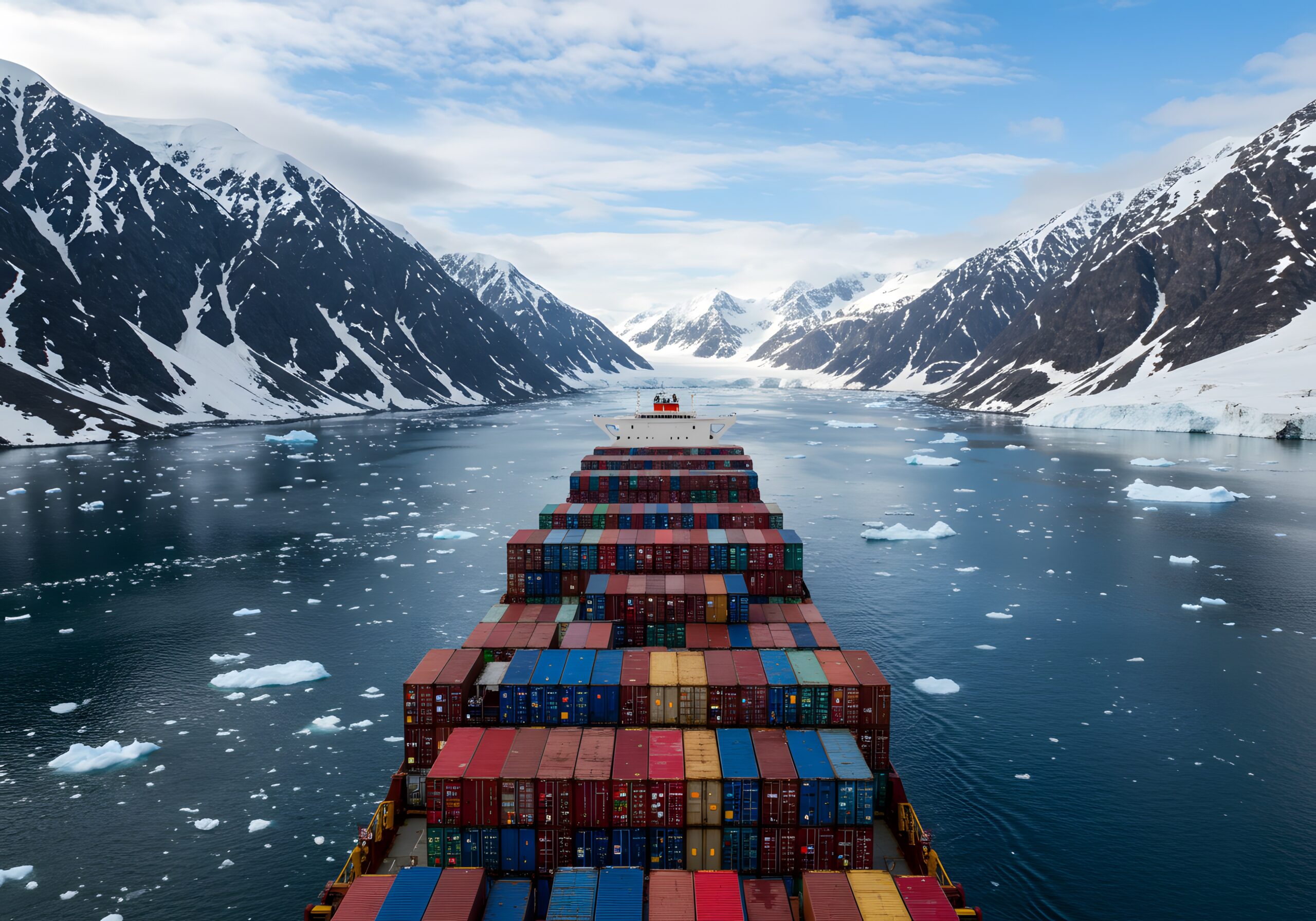By Douglas Kuluk
The Limits of Traditional Ice Roads
For decades, ice roads have been the backbone of transportation in Canada’s North. Each winter, frozen lakes and rivers become highways, connecting remote communities to essential supplies and industries to markets. As an ice road engineer, I’ve spent over 20 years designing and maintaining these critical routes, ensuring that trucks carrying food, fuel, and equipment can reach their destinations safely.
But the reality is changing. Warmer winters, shorter seasons, and unpredictable ice conditions are making traditional ice roads less reliable. Communities and industries cannot depend solely on these routes anymore, and that’s why innovations in Arctic supply chains are becoming increasingly important.
Hybrid Transportation Networks
One of the most promising innovations is the development of hybrid transportation networks. These systems combine ice roads with permanent gravel roads, seasonal barge routes, and even air transport to create a more resilient supply chain. For example, a gravel road may connect a community to a lake crossing, which is only accessible during winter. When the ice is unsafe, barge or air transport can fill the gap, ensuring continuous access to essential supplies.
Hybrid networks reduce the pressure on ice roads and improve safety. They also allow communities to plan more effectively, knowing that there are alternative routes if conditions change unexpectedly. In the face of climate change, redundancy in supply chains is no longer a luxury—it’s a necessity.
Modular and Floating Roadways
Technology has also introduced modular and floating roadway systems. These structures can be deployed on lakes, rivers, and wetlands, providing temporary or semi-permanent routes that complement traditional ice roads. Unlike traditional ice, which depends entirely on freezing temperatures, these modular solutions can remain usable for longer periods and adapt to changing water levels.
In practice, floating roadways can support the transport of heavy equipment and bulk supplies while reducing environmental impact. Because they are modular, sections can be moved, replaced, or adjusted seasonally. This flexibility allows engineers to respond to dynamic Arctic conditions without compromising safety or access.
Leveraging Drones and Air Transport
Air transport has always played a role in northern supply chains, but advances in drone technology are opening new possibilities. Drones can deliver small, high-priority items like medical supplies, spare parts, or communication equipment to communities cut off by thawing ice. While drones cannot replace trucks or barges for large shipments, they provide a critical safety net and improve response times in emergencies.
Similarly, helicopters and small aircraft are being integrated into hybrid supply strategies. For industries such as mining, this can mean the difference between maintaining operations on schedule and experiencing costly delays. For communities, it can mean access to urgent supplies without waiting for a long ice road season.
Data-Driven Decision Making
Innovations in Arctic supply chains aren’t just physical—they’re digital. Satellite imagery, ground-penetrating radar, and real-time climate monitoring allow engineers to make informed decisions about routes, timing, and load limits. Predictive models can estimate the safety and longevity of ice roads or floating systems, helping supply managers plan more efficiently and reduce the risk of accidents.
Data integration also improves collaboration between communities, governments, and industry. By sharing information on ice thickness, weather patterns, and logistical needs, stakeholders can coordinate deliveries and avoid bottlenecks. This approach ensures that supplies reach communities reliably while minimizing environmental and operational risks.
Economic and Community Benefits
Innovating beyond ice roads has real-world impacts on northern communities. Reliable supply chains lower the cost of living by reducing reliance on expensive air freight. They support industries that provide local employment and economic growth. And they ensure that communities have consistent access to essentials like food, fuel, and medical care.
From a broader perspective, resilient supply chains also attract investment. Companies are more willing to operate in remote regions when they know logistics are dependable, even as the climate becomes less predictable. This creates a positive feedback loop: safer and more efficient supply chains support economic development, which in turn strengthens communities and infrastructure.
Balancing Innovation with Tradition
While technology and new strategies are critical, we must never overlook the value of local knowledge. Indigenous communities have observed ice and terrain for generations, understanding patterns and risks that may not appear in satellite data or models. Combining traditional knowledge with modern innovations ensures supply chains are both safe and culturally sensitive.
For example, elders can advise on routes that avoid sensitive environmental areas or reveal subtle changes in ice behavior that data alone might miss. By blending these perspectives, we design systems that are resilient, efficient, and respectful of the land and the people who depend on it.
Looking Forward
The future of Arctic supply chains will be a mix of old and new: ice roads, floating and modular roadways, air and drone delivery, and predictive digital tools. By embracing innovation, we can ensure that communities remain connected, industries can operate safely, and supplies reach their destinations regardless of seasonal challenges.
As someone who has spent decades in the field, I’ve learned that adaptability is key. The North is changing rapidly, and supply chains must evolve alongside it. By combining technology, data, and traditional knowledge, we can build systems that are safer, more reliable, and capable of withstanding the uncertainties of a warming climate.
Ultimately, innovations in Arctic supply chains aren’t just about engineering—they’re about people. Every improvement ensures that families have access to necessities, communities can thrive, and industries can contribute to sustainable economic growth. Moving beyond ice roads isn’t abandoning tradition—it’s building on it to create a stronger, more resilient North.
